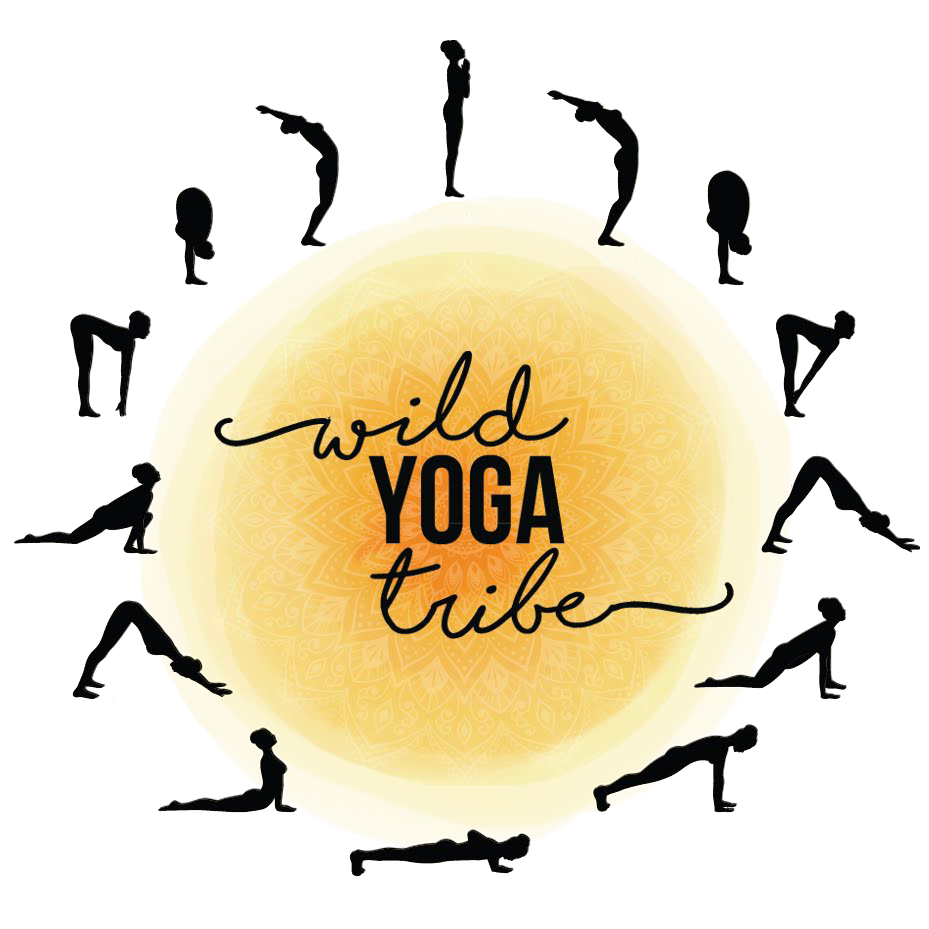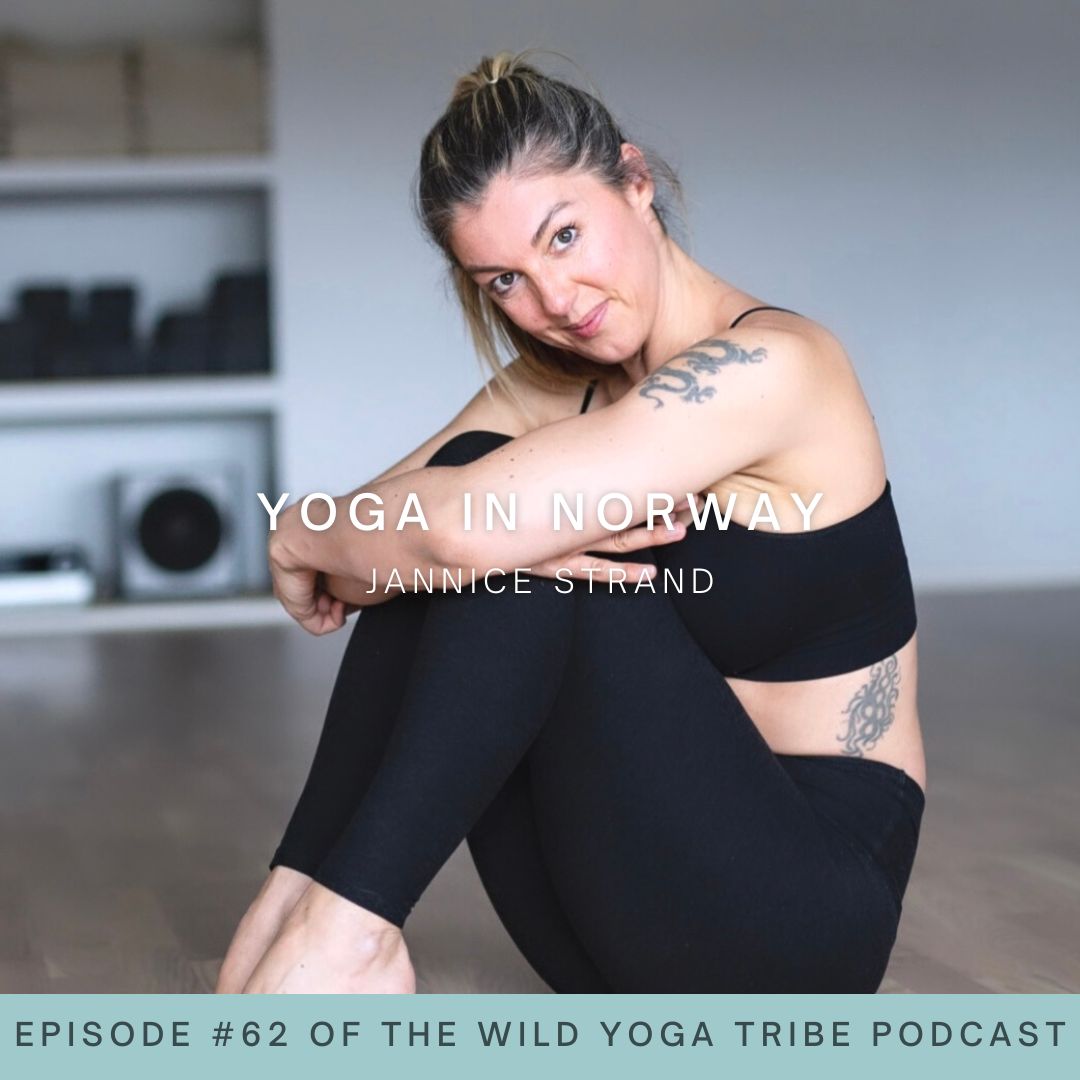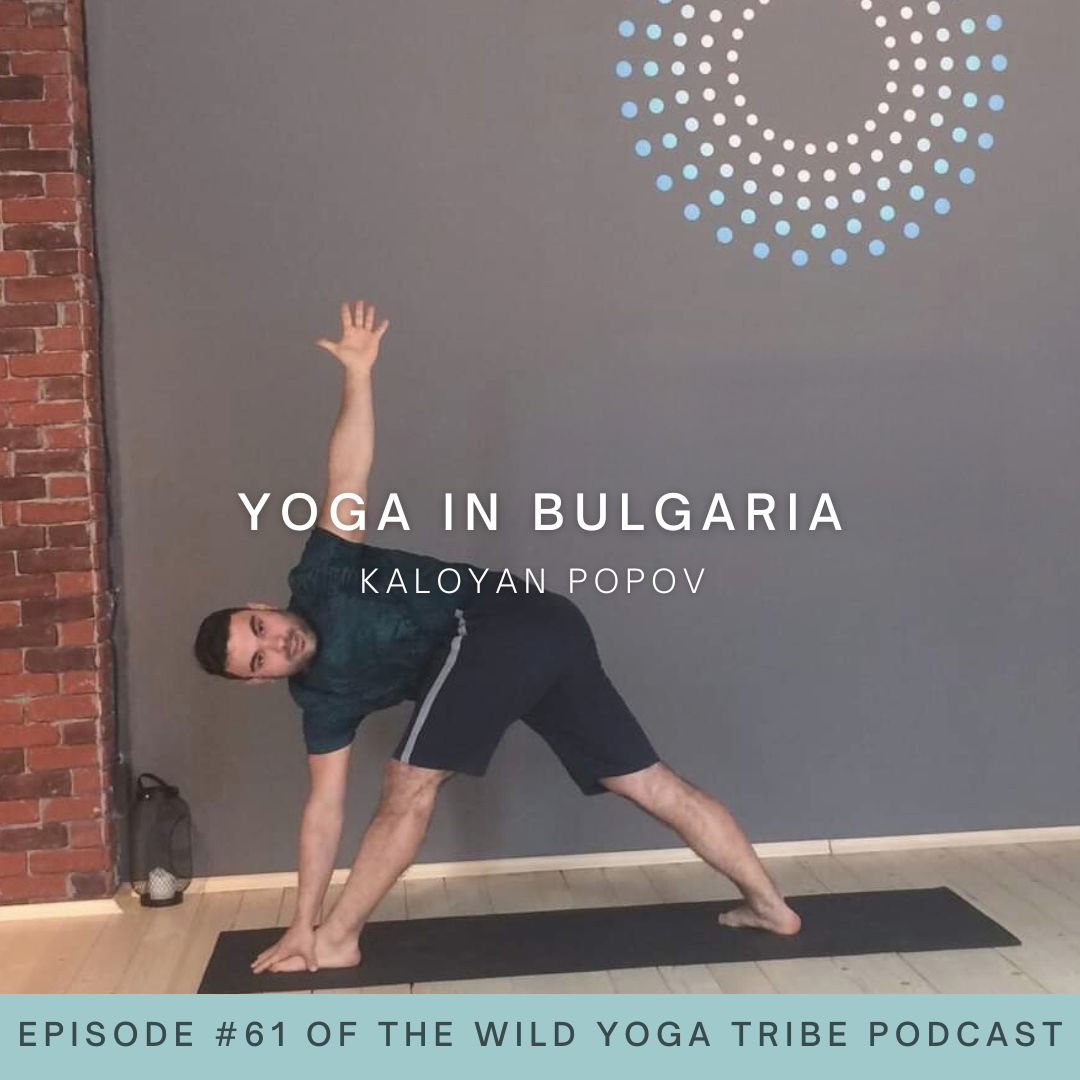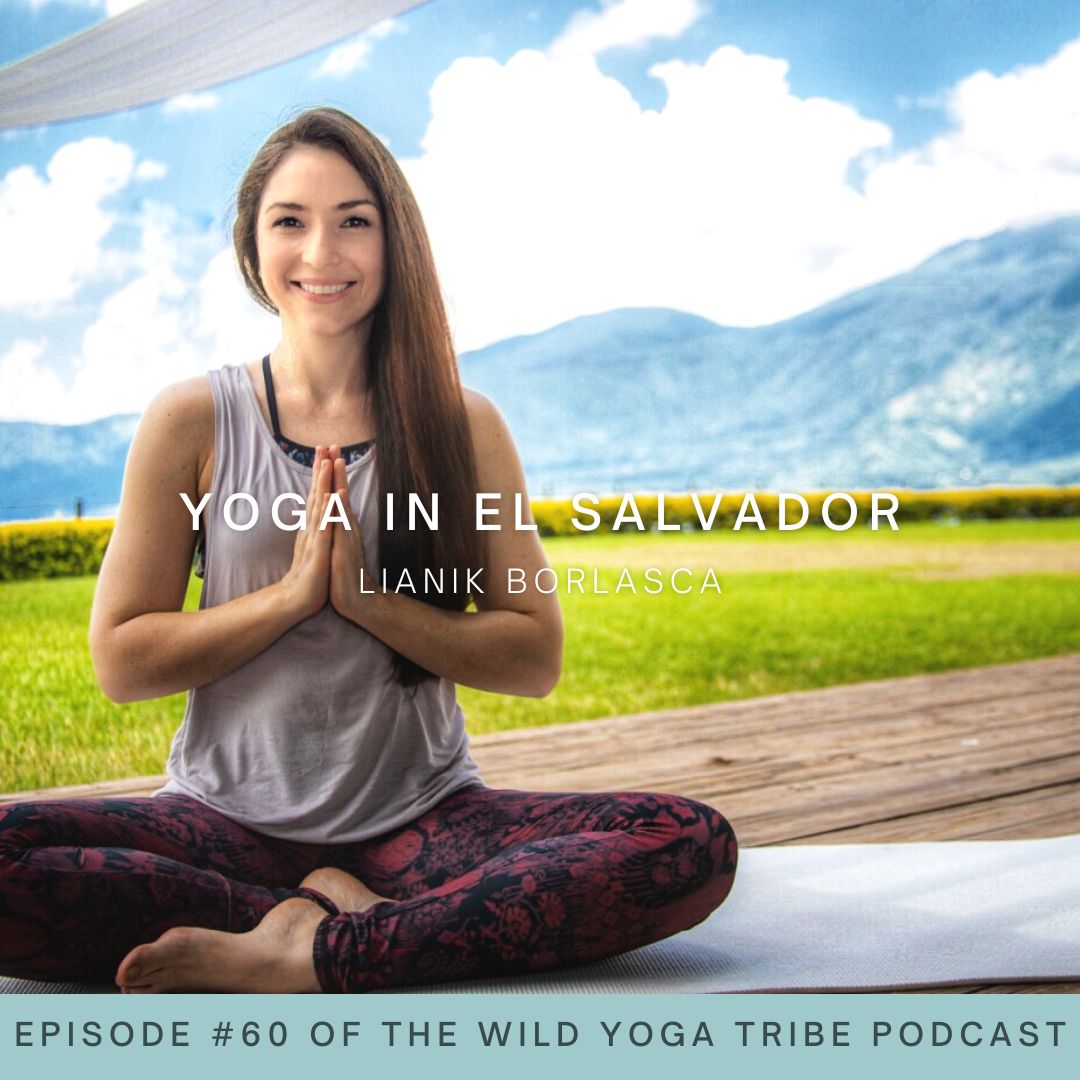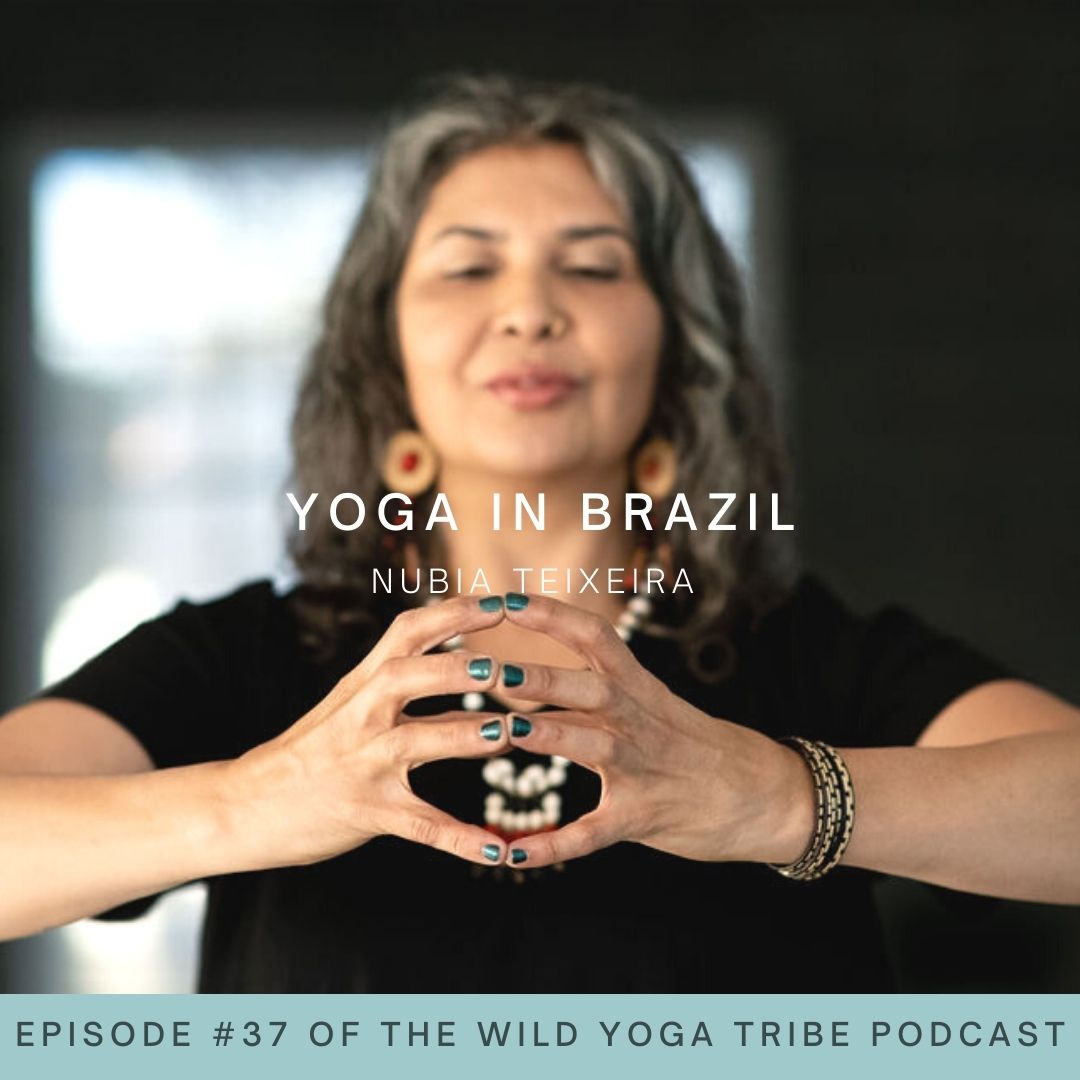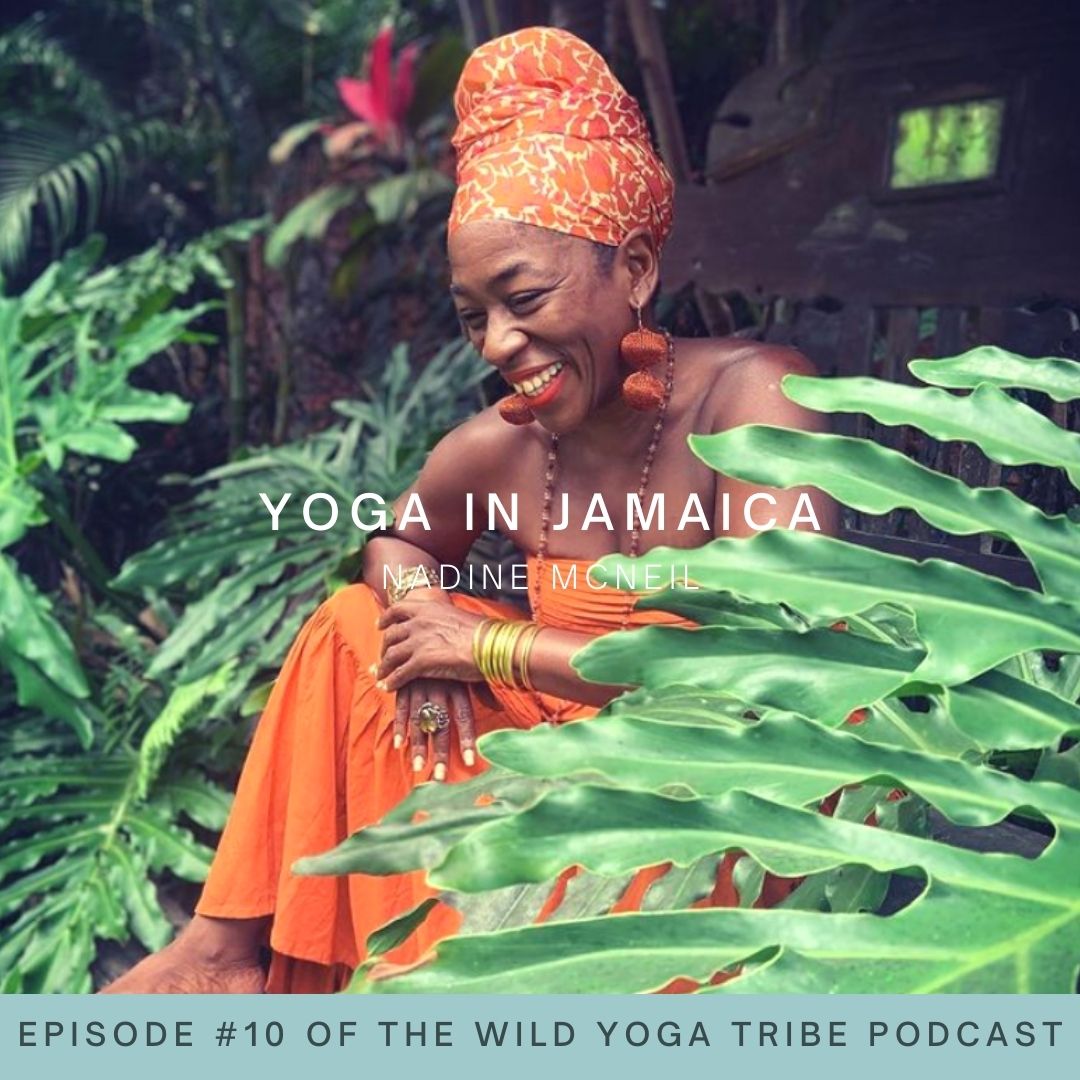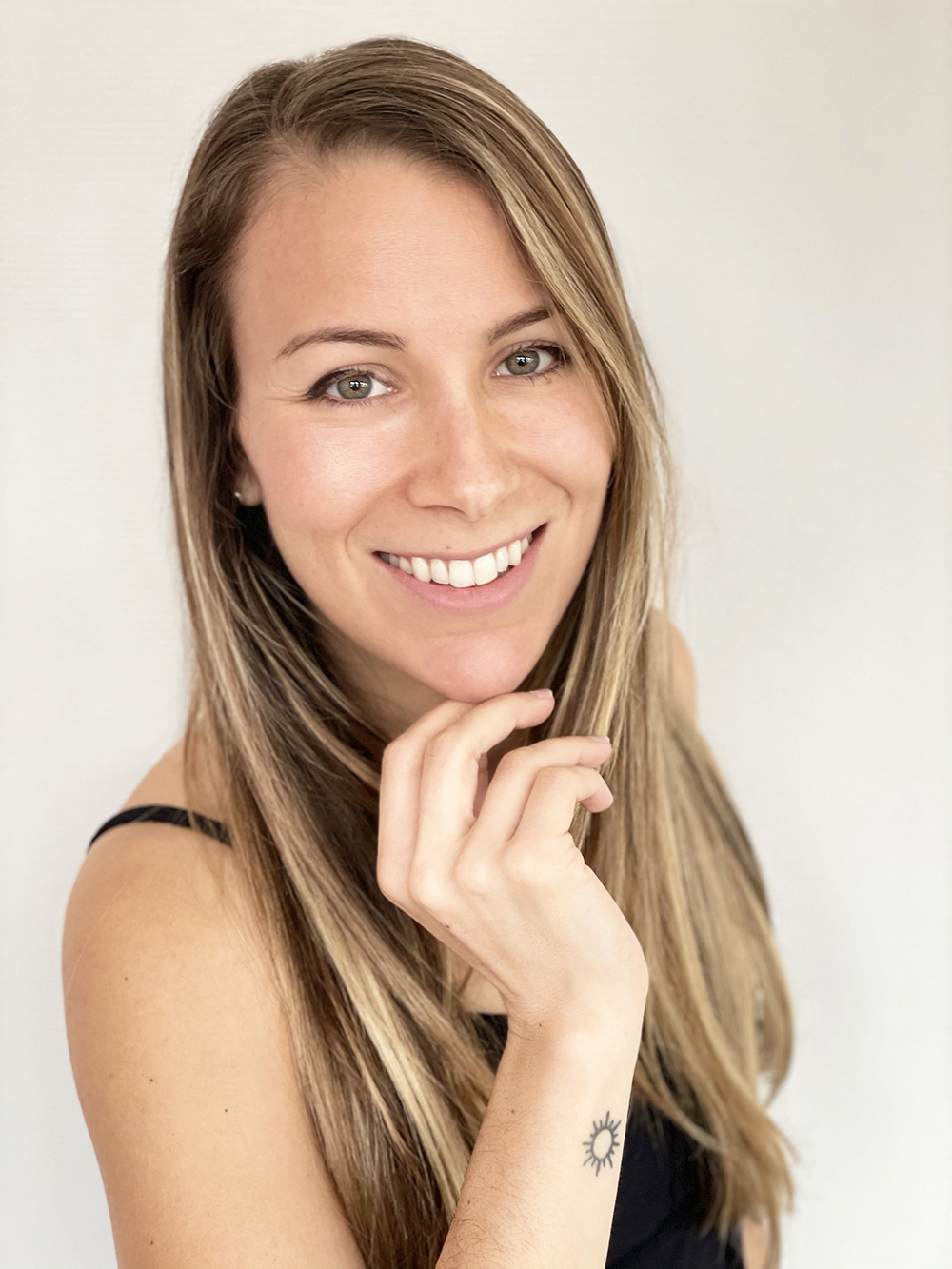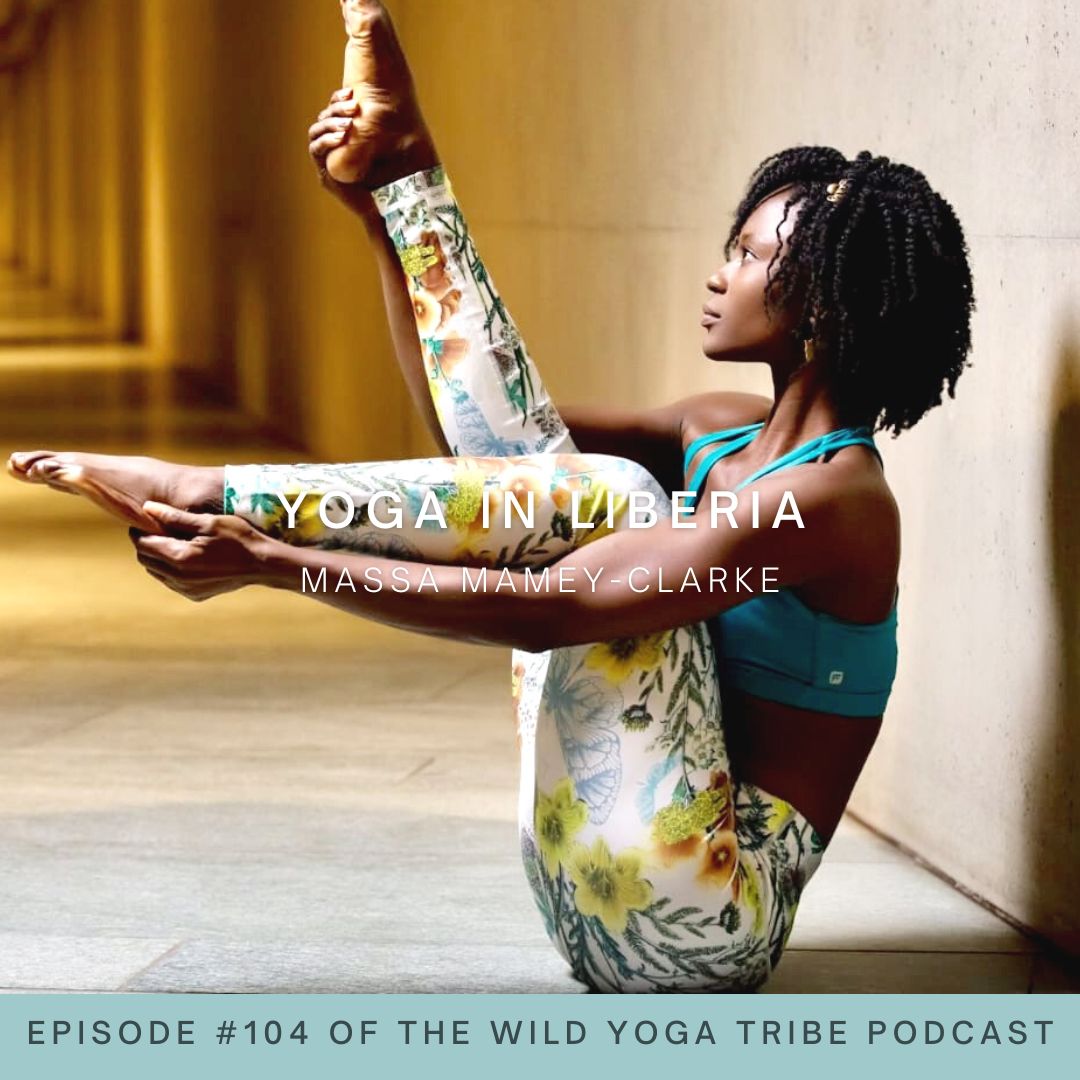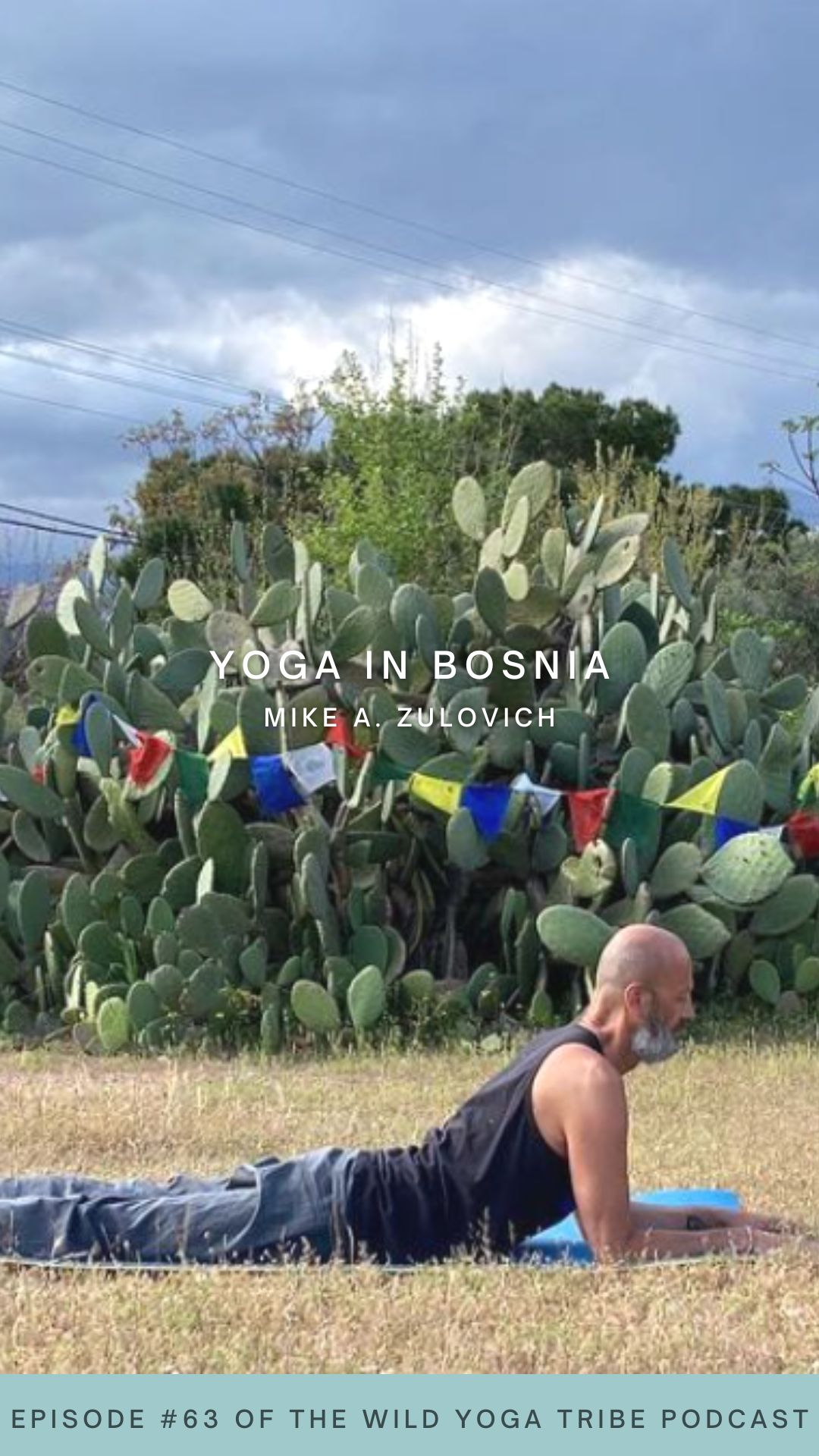
EPISODE #63 – YOGA IN BOSNIA
Meet Mike Zulovich
Meet Mike A. Zulovich in a yoga teacher from Bosnia who is guiding others on the path of bringing the body to yoga, not yoga to the body! Welcome to yoga in Bosnia!
Wild Yoga Tribe Podcast Episode #63 – A Journey of Discovering the Self – Yoga in Bosnia with Mike A. Zulovich
Welcome to Episode #63 of the Wild Yoga Tribe Podcast! My conversation with Mike A. Zulovich, a yoga teacher from Bosnia, was so illuminative as we took a deep dive into Vinyasa Krama yoga and about yin yoga as the sister to her yang brother. I hope that this conversation made you curious about so many things, but mainly and mostly curious about yourself.
If you’re looking to tune into a podcast episode that will hopefully spark a journey of discovering who you truly are then this is the conversation for you.
Tell me more about Mike A. Zulovich
Mike is a yoga teacher and yoga studio owner in Sarajevo. He teaches Ashtanga Vinyasa Yoga, Vinyasa Krama yoga, and Yin yoga. Mike A. Zulovich started his yoga journey in Boston, MA, and traveled to India three times— two times to Mysore, India to study with the Noise family, and one time to Chennai to study with Srivatsa Ramaswami, Vinyasa Krama Yoga).
What to expect in the Yoga In Bosnia episode of the Wild Yoga Tribe Podcast
Mike fell in love with yoga during his very first class. He took a class during a trip to Massachusetts. Yoga is impossible to learn from videos. There is an exchange of energy, immediate feedback, and alignment adjustments needed for yoga to occur. We talked about how technology is a great tool to use, but it does have its limitations— especially when it comes to yoga.
Mike and I then talked about what is Vinyasa Krama yoga, and what it was like for him to go to India to studio Ashtanga Vinyasa and Vinyasa Krama yoga. Vinyasa Krama yoga is more accessible, with ten set sequences.
If you do only yang, yang, yang. Then you may in deep need of yin. We all need balance in our lives. Yin yoga provides the balance of yang. As Mike says, “Yin yoga is the sister to the yang brother.”
I loved Mike’s definition of yoga as is being curious about who you are. Be curious about who you are and how you act, and what behaviors are simply learned behaviors. Yoga helps us to go deeper, and to learn who we are. Yoga is a journey of discovering who you truly are.
Of course, we also talked about yoga in Bosnia and what Bosnia is like as a country. Curious? Tune into the whole podcast episode!
Favorite Quote From Mike A. Zulovich
“Yoga is a daily tool for me to check in and to see how is my mind, how is my body, and how am I doing now, and how was I doing 10 years ago? Physically, mentally, emotionally, am I a better person today than I was yesterday, today than I was five, 10 years ago? Yoga is being curious of who you are trying to figure out all of the layers that you have been given from the day you were born, try to peel them off one by one, one by one, one by one. So yoga is a journey. Discovering who you truly are.”
What’s in the Yoga in Bosnia?
Feel like skimming?
Yoga is impossible to really learn from videos
What is Vinyasa Krama yoga?
Bringing yoga to the body, not the body to yoga
Yin yoga is the sister to the yang brother
Connect with Mike
https://www.instagram.com/yogasarajevo/
https://www.ashtangayogasarajevo.com/
https://www.instagram.com/mike_a_zu_yoga/
Support the podcast:
https://www.patreon.com/wildyogatribe
Want more?
https://wildyogatribe.com/thepodcast/
Everything you need is just one click away! Check out all the resources here: https://linktr.ee/wildyogatribe
PODCAST TRANSCRIPTION
Read + Reflect + Respond
Wild Yoga Tribe Podcast Episode #63 – Yoga in Bosnia with Mike A. Zulovich Transcription
[00:00:00] Lily Allen-Duenas: Namaste and welcome back to the Wild Yoga Tribe Podcast. Today I’m delighted to welcome Mike Zulovich onto the show today. Mike is a yoga teacher from Bosnia and a yoga studio owner in Sarajevo. Sarajevo He teaches Ashtanga Vinyasa yoga and Vinyasa Krama yoga and Yin yoga. So he actually has traveled to India three times, two times to Mysore to study with the Pattabhi Jois family, and one time to Chennai to study Vinyasa Krama Yoga. So I’m excited to dive into those trips and also into yoga in Bosnia. So thank you so much, Mike for joining me on the show today.
[00:00:39] Mike A. Zulovich: Thank you Lily for having me. It’s my pleasure.
[00:00:43] Lily Allen-Duenas: Wonderful. So just to kick it off, how did yoga actually come into your life? How did you first hear about yoga or go to your first yoga class?
How did yoga come into your life?
[00:00:52] Mike A. Zulovich: Good question. As they say, most people change either out of inspiration or desperation. So I was desperate to change my lifestyle and I was looking for different ways to I changed my life basically cause I wasn’t satisfied how things were going in my life. And so I was doing a lot of running and I stumbled upon my first yoga class back in probably in 2007 something like that, in Boston, Massachusetts in Cambridge. I think it was one of the Baron Baptiste. Bar So I came from the gym and running and I thought I was strong and, [00:01:30] but the first class of yoga really changed the whole perspective on the strength and endurance, and it was love on first site I can say.
[00:01:41] Lily Allen-Duenas: Amazing. And so you fell in love with your first class, and then what happened? Did you decide to just start taking classes more regularly or do some YouTube learning? What was the next step for you?
Yoga andYouTube
[00:01:55] Mike A. Zulovich: Back in the days and even now, YouTube is more just an inspirational tool, not a learning tool, because yoga, it’s impossible, in my opinion, to learn or to teach yoga through videos, even live videos, because yoga requires. Exchange of the energy and immediate feedback, and sometimes even adjustment, like physical touch.
So I I started doing, going to the classes right away and I was doing research on yoga and I really interested me from get go. So as I was doing classes and going to different studios in Boston, I just felt that something was, You’re new to yoga, you’re in a group of 20, 30, sometimes 40 people practicing.
And for the teacher, even if he or she has an assistant, it’s impossible to come and give individual attention to a student just to make sure that he or she’s doing it right. [00:03:00] So that aspect something is missing, but I didn’t know. I was missing until I found it.
[00:03:07] Lily Allen-Duenas: As is the beauty with so many things, right?
[00:03:10] Mike A. Zulovich: precisely.
[00:03:11] Lily Allen-Duenas: and I love how you brought up that yoga is in your opinion, impossible to teach on videos. I agree with you that there’s such a limited. The, It’s just, it is so limited. The technology of video for yoga. I agree. The energy exchange, the immediate feedback, just seeing like every aspect of the body.
In such hyper focused detail can only be done with our own eyes as the teacher and I’m, and the, of course, the manual adjustments are, can be wonderful or responding verbally with verbal cues when we see something’s off. It can be so hard if we’re looking at a Zoom screen with 30 little tiny squares to actually see you.
It is pretty much impossible. But at the same time I personally feel gratitude that during the pandemic there, when. Forbidden to join yoga classes and things were shut down. Not every community could get together in a park or someplace they felt safe. So I’m grateful that there still is an outlet for learning online or for communicating with yoga teachers all over the world and trying different styles with them and getting to spend time.
For the real growth in the Asana practice or the growth in the pranayama, any element of the practice. I agree. You kinda, you have to be in person. [00:04:30] So what’s your thoughts? Did you do it all during the pandemic? Any Zoom teaching or did you just hard No, for that.
Yoga on Zoom
[00:04:38] Mike A. Zulovich: In first, back in 2020, let’s say, of March when all the hell broke loose. No. Nobody, no knew what was going on. Everything was shut down. And I had to close my studio for about three or four months. And then after that, I slowly opened up and people who are willing, ready, and able to practice, they came and.
And we practiced. So I do agree with you that technology is an unbelievable and great tool to use. And sometimes it’s just so great that I don’t have to travel to China to learn Chinese or, visit my family who is in the States or wherever. I can do that on Zoom or any other means. And during pandemic, It was just brilliant that we were able to stay in touch as a community and practice together. And I was teaching online classes, but that was, it was an emergency situation, but now more and more people are just becoming, complacent and doing it from home. And that’s okay too. I respect everybody’s choice. I just in my own opinion, yoga is one of those things that cannot thought or learned, long distance or online. So at times like that, it came very handy to be able to [00:06:00] continue the practice and continue the relationship of the community that every teacher built.
[00:06:08] Lily Allen-Duenas: So one thing I’d like to ask you too, Mike, is about Vinyasa Krama yoga. I would love for you to explain for our listeners who maybe aren’t familiar with that yoga type, what is Vinyasa Krama and what was it like to go to Chenai and study it?
Studying Yoga in India
[00:06:22] Mike A. Zulovich: Well, For me, being in Ashtanga VI Yoga for. Five, even six years. It was a big eye open. Because, as you said, I wanted to learn yoga, so I go to the yoga studio. I wanted to learn Ashtanga Viyasa yoga. I go to Mysore to the source where the Ashtanga Vinyasa yoga was created by Pattabhi Jois. So I went there like within a year of my practice of Ashtanga yoga because I really wanted to learn, from the source.
And I studied with the Jois family for you. Four, five months, four months altogether, two trips. And then in 2015, I went first to Madrid to study with Sri Swami,
And then second time, that was a 100 teacher training, 100 hour teacher training course that he was teaching in Madrid. And I opened up, I got out of the Ashtanga mindset. I just wanted to see something else and tried something else. Primarily due to the fact, Rama Swami was a student of Krisnamacharya for over 30 years.
And that’s not the [00:07:30] case with Pattabhi Jois or even Iyengar. They studied with Krisnamacharya a very short periods of time. I guess Patabi Joyce was there for 6, 7, 8, maybe years, and Iyengar was even with Krisnamacharya shorter. Anyhow, so Rama Swami spent over 30 years studying with Krishnamacharya who we in the west call a father of modern yoga.
These 100 hours I spent with Ramaswamy in Madrid was just a whole life- changing experience in terms of how I look at yoga or how I was looking or experiencing yoga. And so there’s a before and after experience with yoga for me, my own practice and my own teaching style.
That’s why I went to Chenai for the second time to do the same program. 100 hours teaching training, the same thing. But it was in India. So Vinyasa Krama is the way how Krishnamacharya was teaching Rama Swami and then you have a yin yoga that Desikachar is teaching or was teaching in Chennai, and now you have. So Krishnamacharya was teaching different students different ways of learning. Teaching yoga.
What is Vinyasa Krama Yoga?
[00:08:44] Mike A. Zulovich: So to go back to your question about Vinyasa Krama Yoga, how it’s different than other styles is Ashtanga Vinyasa yoga is set up six series.
You started with the first and you slowly or fast, [00:09:00] depending on the body type and your abilities, you progress through postures one by one. In Vinyasa Krama, it’s very similar, but there are 10 sequences that you practice and it’s much more detail oriented than it is Ashanga. It’s a very it’s a mild approach. There aren’t too many Vinyasas or Chaturanga, Up-Dog-Down-Dog down dog, those jumpings as it is in Ashtanga. So it’s much more accessible to many body types in Ashtanga Yoga. Unfortunately everybody can do Ashtanga, but Ashtanga is not for everyone. For everybody. So you know. But Vinyasa Krama is a very gentle or gentler approach to yoga asana practice. can say much more about it, but it’s in a nutshell, there are 10 sequences. There are, much more elaborate like even back bending in Ashtanga yoga in, in a intermediate series, in second series there are six, seven back bending pos, and you’re in capita is very deep back bend. So I feel that there is not enough preparation for such a. Back bend, such a deep back bend and even Yara yoga, it actually it’s one sequence dedicated all to back bending, back, bending.
At the end, you really, your spine is ready for deeper back bends, such as Lagovajrasana or Kapotasana or aas, [00:10:30] if you will.
[00:10:30] Lily Allen-Duenas: Thank you so much for the background on Vinyasa Krama and how it, how it’s rooted in the traditions and also what it’s, how it’s compares to Ashtanga Vinyasa. I think that was probably helpful for listeners who I know have definitely tuned in to other episodes where we’ve talked about Ashtanga.
But I know on the show we haven’t talked about vinyasa krama so that was special to get to highlight. So you teach Ashtanga Vinyasa, Vinyasa Krama and yin yoga at your studio. Do you find that these offerings activate different things in your students or are you kind of surprised at how certain students gravitate towards certain styles? I’d love to hear that kind of behind the scenes what you observe.
Doing other yoga styles
[00:11:13] Mike A. Zulovich: Yeah yeah, that’s a good point. So Ashtanga Vinyasa yoga is really straightforward. You look at that body type and you try to bring yoga to that type of body, not that type of body to yoga.
Because some teachers teach how it is on the picture of any other teacher. But my body is not that type of body, and my skeletal system is not like that. So I try to accommodate yoga to every different body type, and Vinyasa Krama helped to be able to do that and gave me the tools. So now when I have some people come to Ashtanga Yoga, they say, No, come try Vinyasa Krama Yoga and then do a month or two with that kind of a style [00:12:00] of yoga asana.
And then maybe again, try to do Ashtanga Vinyasa Yoga and then see what really resonates with you what’s better for you. And then Yin yoga is just the beautiful sister of the Yang brother yoga style. So then you have yang style vinyasa krama or Astanga Vinyasa yoga, and you do yin yoga and then you are in balance.
But if you do only yang, I think that’s not sustainable in the long term. Doing a lot of young. Styles of practices because even our daily life is pretty much young. We have to get up, you have to go to work to school. It’s all about physical activity. Yin yoga is about staying still for three to five minutes and do nothing except to bre athe. So it’s perfect combination in my.
Our lives are so yang
[00:12:53] Lily Allen-Duenas: Yeah, it really is, and I love how you highlight. How our lives are so yang, you know, we have all the stimulation, all of these things to do. We’re usually busy and hectic and going either from one place to another, physically running errands or having a, a full schedule of meetings or we’re going places constantly in our mind from one email to one project, to another phone call.
And that’s all very yang, very active and. So often I find that students want yang in their yoga. They’re like, No, I need to go. I need to power through. I need to sweat. Or I need [00:13:30] to, No, if I sit still i’ll, my mind will go crazy, cuz they’re just used to that momentum. So it’s an amazing thing to do Yin yoga or even slow slow hatha where it’s so challenging. They have so much resistance to it. And when there’s something that. And they say, Oh, actually I need that. Or they notice the difference in their mind and their energy after the class. It’s just so powerful.
[00:13:59] Mike A. Zulovich: Exactly. And sometimes the mind is so busy that some people have such a hard time staying. In one hour long yoga class, the minds just so busy that it’s it’s painful. Painful for some people to be still.
[00:14:15] Lily Allen-Duenas: So if that’s the case with some of your students, or if some of our listeners are saying, Hey, oh, that’s me. What advice do you offer up to those students who find it painful to sit still either in meditation or in yin based yoga practices?
What advice do you offer up to those students who find it painful to sit still either in meditation or in yin based yoga practices?
[00:14:31] Mike A. Zulovich: Use it as the best guru that you can have. A best teacher that you can have teaches you patience, teaches you to slow down. Use it as an opportunity, not as a adversity, not as a, an enemy. Just use it to your advantage to see why I am having such a adverse a reaction to something that wants to slow me down.
What is it inside of me [00:15:00] that is preventing me from slowing down? It’s an opportunity to grow and to understand yourself in my opinion.
[00:15:07] Lily Allen-Duenas: Yeah, absolutely. It can be an amazing teacher. Anything that we resist, anything that. We feel something strongly arise in us. I think we can always use to see ourselves more clearly or provide insight on things we haven’t processed.
[00:15:25] Mike A. Zulovich: If we can just stop, recognize it and try to understand it.
[00:15:32] Lily Allen-Duenas: Yes.
[00:15:33] Mike A. Zulovich: Yeah.
[00:15:34] Lily Allen-Duenas: So I also would love Mike to ask you, I ask every guest on the show, but you hinted too that Vinyasa Krama kind of changed your whole perspective on yoga and what yoga is. So my question is, what is your definition of yoga?
What is your definition of yoga?
[00:15:51] Mike A. Zulovich: I’m still trying to find out after, 13, 14 years of practic yoga. It’s changing me daily. It really is something that it’s a daily tool for me to check in and to see how is my mind, how is my body, and how am I doing now, and how was I doing 10 years ago? Physically, mentally, emotionally, am I a better person today than I was yesterday, today than I was five, 10 years ago?
I think I am, and I think I am changing. I think I am growing and I just have to show up on my mat, do my practice, however [00:16:30] long I have time for it, and just show up and do the practice. And yoga is, being curious of who you are trying to figure out all of the layers that you have been given from the day you were born, try to peel them off one by one, one by one, one by one.
And then understand that most of the things we do, And how we behave and how we react is learned behavior from our parents, from our friends, from the system. Many teachers are out there teaching us things that they think are right thing for us, but they don’t know. Even our parents don’t know what is right for us because we are not them.
So yoga is a journey. Discovering who you truly are.
[00:17:28] Lily Allen-Duenas: That was beautiful. Mike.
You have to find out what yoga is for you
[00:17:30] Mike A. Zulovich: Thank you. That’s, again, as I said, I’m still trying to figure out what yoga is. There are definitions, clear definition, what’s yoga, and everybody listening to this podcast can go and type in google yoga and they’re gonna have many definitions and they’re all somebody else’s opinion of what yoga is. You have to, for yourself, find out what yoga is for you, not what Patanjali says, or some [00:18:00] teacher or whomever, but just what is it for you? How is it changing your daily basis?
[00:18:05] Lily Allen-Duenas: Yeah, you do have to learn for yourself. And as you brought up, there’s so many learned behaviors we’ve picked up from our parents or from society culture, but there’s so many learned ideas of what yoga is as well. Maybe if you think it’s just an exercise or religion or a cult the list would go on and on.
There’s so many different things that your your community or even social media, has projected onto yoga. So I think being curious and really finding that out yourself. Of course, I think education’s amazing. Do reading, listen to yoga teachers like you and I and others around you to say, Okay, what could yoga be? What could it be? And then find your own answer.
[00:18:48] Mike A. Zulovich: Yeah. And if you’re looking for yoga, for you to be a physical activity, that’s what yoga is gonna be for you. If you’re looking to be more spiritual or mindful, or, go and study Hinduism, yeah, yoga is gonna help you achieve that. If you wanna be a better human being, yoga can help you with that. It’s all about the volition. What is it inside of you that is bringing you into yoga?
[00:19:11] Lily Allen-Duenas: Yeah. Yeah, and I think also being mindful about how. That can change because in the beginning maybe you came to yoga just cuz you said, I have back pain, I need some relief. And that was your goal was to relieve back pain. And then you, over six months, six weeks, six years, you, it slowly [00:19:30] changed. And if you take that time to pause and reflect as we talked about being still and listening to ourselves, then maybe you’ll discover, Oh, actually yoga now isn’t about relieving back pain.
Yoga is about. Finding space for self care space to hear myself think, or space to be alone or space to progress on a spiritual journey. It’s, there’s so many possibilities, but also I think it’s important to, to tune in, not just once you know in your lifetime what’s yoga . Just to revisit that. I think we all grow in.
Yoga and Pain – What is This pain and why is it here?
[00:20:07] Mike A. Zulovich: Yeah. And again, back pain or shoulder pain. What is the source of the pain? Sometimes there has nothing to do with that physical pain could be an emotional pain. This could be some trauma from when we were one or two years old, discovering that. Source of the pain, not just the physical. Oh, I feel better now. I can move my shoulder freely, or I can bend and touch the floor with my hands. Yeah, that’s wonderful. But again, where was that pain coming? What is the source of the pain? That’s also a beautiful thing about yoga, in my opinion.
[00:20:41] Lily Allen-Duenas: Yeah, it’s all interconnected. It’s not just this physical level. We have all the koshas, all the sheaths and layers, and so I. Yoga teaches us to go a little deeper than just that, the easiest surface level of I have back pain. That’s just level one, what can you do to investigate more?[00:21:00]
[00:21:00] Mike A. Zulovich: Right there. There was so much more pain hidden, not felt physically that was there and that physical pain was the final call to stop and do something about it.
[00:21:10] Lily Allen-Duenas: Yeah. It is.
[00:21:11] Mike A. Zulovich: Yeah.
[00:21:12] Lily Allen-Duenas: So Mike, too, I would love to shine a little light on your yoga studio and to ask you more about yoga in Bosnia as well. I would love to hear was it popular 10 years ago, 20 years ago? Is it, you think the peak or zenith of popularity now and what’s going on on the yoga scene in Bosnia??
Yoga in Bosnia
[00:21:32] Mike A. Zulovich: Yeah it’s, it was a different interesting journey. I wanna say I arrived. In Sarajevo in 2010 and 2011, I was in . I was living in Boston before I came to Sarajevo, and I was born in Sarajevo, but I lived in the States for many years. So when I came here, when I moved back to Sarajevo, I there were like two studios open.
In Bosnia and there was nothing that, like what I used to in the states, very different. So I checked out one and the other one I didn’t even go and it just wasn’t what I was looking for. So after I came back from India, I was still very young, so to speak in all the yoga world and practice.
But I was having my daily practice and I was so excited about [00:22:30] how quickly it was changing me, changing my body and my mind and my thinking, and I wanted to also share with other people. So I started teaching. So when I went back to for the second time in 2015, I spoke to Sharat and I said I’m teaching yoga in Sarajevo..
He goes, Already? I said, Yeah, do you want me to quit to stop? He goes no. But it’s very it’s too soon. I didn’t know back then what he meant by it, but I understand. I wish I spent, I wish I spent five or 10 years being a student and learning with another teacher instead of teaching it right away.
But I guess that was my karma. And this city needed that because this country was going through a war in the nineties and a lot of people are left with serious PTSD and I felt the energy and I felt. This was my call to stay here and to teach, and I started teaching again. At the beginning it was very tough.
Like my program in the morning for six months, no one showed up. I was just there for six months doing my practice and wait until eight o’clock in the morning, no one showed up. I would lock it up and go home, and that’s what I did for six months because people are just not used to getting up in the morning and going to do yoga practice. So I had to be stubborn and believe in what I was [00:24:00] doing or be, or maybe I was just being crazy and insane to do something like that. But anyway, so it wasn’t Vinyasa yoga wasn’t popular. Ashtanga yoga wasn’t even present here, so I just believed in it because it helped me tremendously changed.
And I just wanted to share that with others. And then slowly, people started coming and then experiencing Vinyasa yoga. Ashtanga yoga. And it was just like, Wow, what is this? And the other yogas they tried wasn’t anything like what I was teaching. And then slowly, year after year, and now after a decade, people walking down the street with a yoga mat under their arm and just drinking juice or a smoothie and it’s normal.
But 10 years ago it wasn’t like that. So it was a very challenging, it was very I just loved it and I had faith and love for yoga, and I was just going to give it a time, give it a three, five years, and I’m so glad I did. And now it’s a very different scene, as I said, and I’m happy that many people are practicing now.
There are many studios in Sarajevo now, maybe 10 even more, and a lot of these studio owners were practicing with me or with my ex-wife. I’m so happy to see that there are many studio centers in so [00:25:30] that people can go to and practice yoga.
[00:25:34] Lily Allen-Duenas: Me too. I’m so glad to hear that it really blossomed. And what dedication for you to show up every single morning for six months without a student coming. That is amazing to hear that you have that tenacity and will and that faith that it’s you know what? I’m gonna come and I’m gonna show up and they will come sooner or later.
Yoga students in Bosnia
[00:25:52] Mike A. Zulovich: I I showed up for my practice and then I was waiting for students, and now it’s 12 and a half years that I’ve been teaching Mysore morning program, and now there is a core group. Of dedicated students who are showing up at five, 6, 6: 30 in the morning, doing their practice before the school or work.
So I’m just happy to see that, and I’m very thankful and grateful for every single one of them who shows up in the morning because I know how hard it is to go. First to stop eating a certain hour, then go to bed a certain hour, and then to get, to be able to get it up and come and do the practice. So it’s a lot of it’s very, it’s a lot of discipline and I really appreciate every, in each of my students who are developing that discipline and developing better version of themselves.
Discipline and decisions in yoga
[00:26:49] Lily Allen-Duenas: Oh, Mike, I love how you brought that up so that the discipline isn’t just showing up in the morning. It’s also the discipline to stop eating at a certain hour. The discipline to show up, it, [00:27:00] it’s almost in the whole day. It can be in the whole day as well. Do I have an, an extra glass of wine or four beers or if I do, that means I can’t go to class in the morning. You really have to make decisions based on your practice.
[00:27:13] Mike A. Zulovich: And Know your priorities.
[00:27:15] Lily Allen-Duenas: Yes, Know your priorities.
Exactly. And I think that’s something that a lot of students come to realize without even realizing it. They just start making all these decisions cuz they know, Oh, I have to wake up early for my class.
They haven’t, they don’t acknowledge how much. Discipline, they actually do have. So if any students are listening and they’re realizing, Oh wait, that’s me, . I think Mike and I just wanna say, just great job. And we acknowledge how hard that is.
[00:27:43] Mike A. Zulovich: Yeah, kudos. Kudos to all of you who are mindful day before your practice because that’s how you change the pattern. That’s how you change old habits of staying a plate, as you said, drinking one beer or one glass of wine, or instead of taking a whole bottle of wine or four or five years, and then next.
What are you good for? You just go for the coffee and to wake up and drag your body to the work and school, whatever. But then, and again, people make choices, whatever fits their lifestyle. And we are talking about the yoga world and I think that yoga is asking you to change some things and not to give up on life.
Not to give up on Whatever you consider is a joy [00:28:30] that brings you joy. Yeah. You can go out with a friends, you can have a glass of wine, but not two, not three, not four. Friday is. Friday night is night when we can chill, because Saturday morning we don’t have a practice and we can take it easy, but Monday through Friday, we try to stay focused and really be mindful.
What do we put inside of our body? The food, the information, and the energy and all of that is feeding on our body. So we just try to be a little bit more mindful of what kind of stuff we put inside of our bodies.
[00:29:11] Lily Allen-Duenas: Absolutely. And so in case Mike, some of our listeners aren’t familiar with Bosnia or don’t know much about it, would you mind talking more about your country and what Bosnia is?
All about Bosnia
[00:29:23] Mike A. Zulovich: Well, Bosnia is or was one of the six states of a former Yugoslavia. Uh, Again, Sarajevo is the capital of Bostonian Hertzegovina was a host to 1984 Winter Olympics. It’s a beautiful city where you can see Ottoman and Astro-Hungarian empires. In a city, you can just see the where one empire ended and when the other one took over.
You can see that in, in architecture. You can [00:30:00] see that in the buildings. And so it’s of like where East meets the best sort of, and it’s very multi multicultural, very welcoming country. People are very friendly and welcoming. So I think it’s one of those places that you can still feel that life is.
Not as fast paced as in most Western countries. Sometimes Sarajevo reminds me of my trip to Nepal. Many people, have a time to sit down and talk to each other and drink coffee and not to schedule the coffee. Oh, today I can’t, but let me put in the schedule for tomorrow 12 o’clock.
Or can you do it? It’s like life is more spontaneous. So I think that this is one of the places. You find still the quality of life and people are still turned over to each other, not away from each other.
The value of going slower
[00:30:57] Lily Allen-Duenas: Yeah. That’s awesome. And that’s a special space and place to have those type of cultural values where it’s okay, let’s go a little slower. And Mike, if any of our listeners are maybe planning a trip to Bosnia or want to learn more from you or have a question for you about something you said, I’m gonna link your Instagram and your website here in the show notes. And on my website, wild yoga tribe.com/yoga in Bosnia. But would you wanna say here on the podcast itself, what your [00:31:30] Instagram account is and your website?
[00:31:32] Mike A. Zulovich: The website is ashtanga yoga.com and I do have an Instagram account, which is Mike underscore a underscore, ZU Yoga Make A ZU Yoga.
[00:31:46] Lily Allen-Duenas: Awesome. And I think you also have Instagram at Yoga Sarajevo.
[00:31:50] Mike A. Zulovich: Correct, Yes. We do some posts about events. We do have some Kirtan nights, potluck dinners, movie nights and guest teachers and stuff like that. We have yoga festivals and yoga retreats and
[00:32:06] Lily Allen-Duenas: Is there a yoga festival in Bosnia?
Yoga festival in Bosnia
[00:32:08] Mike A. Zulovich: Well, I started one four years ago and it was, it has been very successful. We had 70, 80 people one year coming to this beautiful place in a valley on the lake. And it’s just great , very laid back, very rustic and very. In a very beautiful surrounding in the nature of the lake, so It’s great.
Yeah.
[00:32:38] Lily Allen-Duenas: Oh, magical. And is that called just Yoga Festival Sarajevo, or any specific name?
[00:32:43] Mike A. Zulovich: No. It’s called Universal Love Yoga Festival.
[00:32:48] Lily Allen-Duenas: Wonderful. I’ll check that out and hopefully some of our listeners will as well. And I just wanna say thank you so much, Mike, for taking time to have this beautiful conversation with me. It has been a [00:33:00] joy to be with you.
[00:33:01] Mike A. Zulovich: Thank you, Lilly. You’re doing a great job and I really applauded you for doing such a big and so interesting project to interview yoga people around the world, so great job.
[00:33:16] Lily Allen-Duenas: Thank you.
[00:33:17] Mike A. Zulovich: Yeah. Awesome.
[00:33:19] Lily Allen-Duenas: Thank you so much for tuning into this episode of the Wild Yoga Tribe Podcast. My conversation with Mike Zulovich, a yoga teacher from Bosnia, was so illuminative as we took a deep dive into Vinyasa Krama Yoga, and about how yin yoga is the sister to her brother Yang Yoga. I hope that this conversation made you curious about so many things, but mainly and mostly curious about yourself. If you’re looking to tune into a podcast episode that will hopefully spark a journey of discovering who you truly are, then this is the conversation for you. Thank you for listening to the Wild Yoga Tribe Podcast. Be well.
The Wild Yoga Tribe, LLC, owns the copyright in and to all content in and transcripts of the Wild Yoga Tribe podcasts, with all rights reserved, including right of publicity.
What’s Okay
You are welcome to share an excerpt from the episode transcript (up to 500 words but not more) in media articles (e.g., The New York Times), in a non-commercial article or blog post (e.g., Elephant Journal), and/or on a personal social media account for non-commercial purposes, provided that you include proper attribution and link back to the podcast URL. For complete transparency and clarity, media outlets with advertising models are also welcome to use excerpts from the transcript per the above.
What’s Not Okay
No one is authorized to copy any portion of the podcast content or use Lily Allen-Duenas’ name, image or likeness for any commercial purpose or use, including without limitation inclusion in any books, e-books, or on a commercial website or social media site (e.g., Instagram, Facebook, etc.) that offers or promotes your or another’s products or services. Of course, media outlets are permitted to use photos of Lily Allen-Duenas from her Media Kit page or can make written requests via email to receive her headshots folder.
